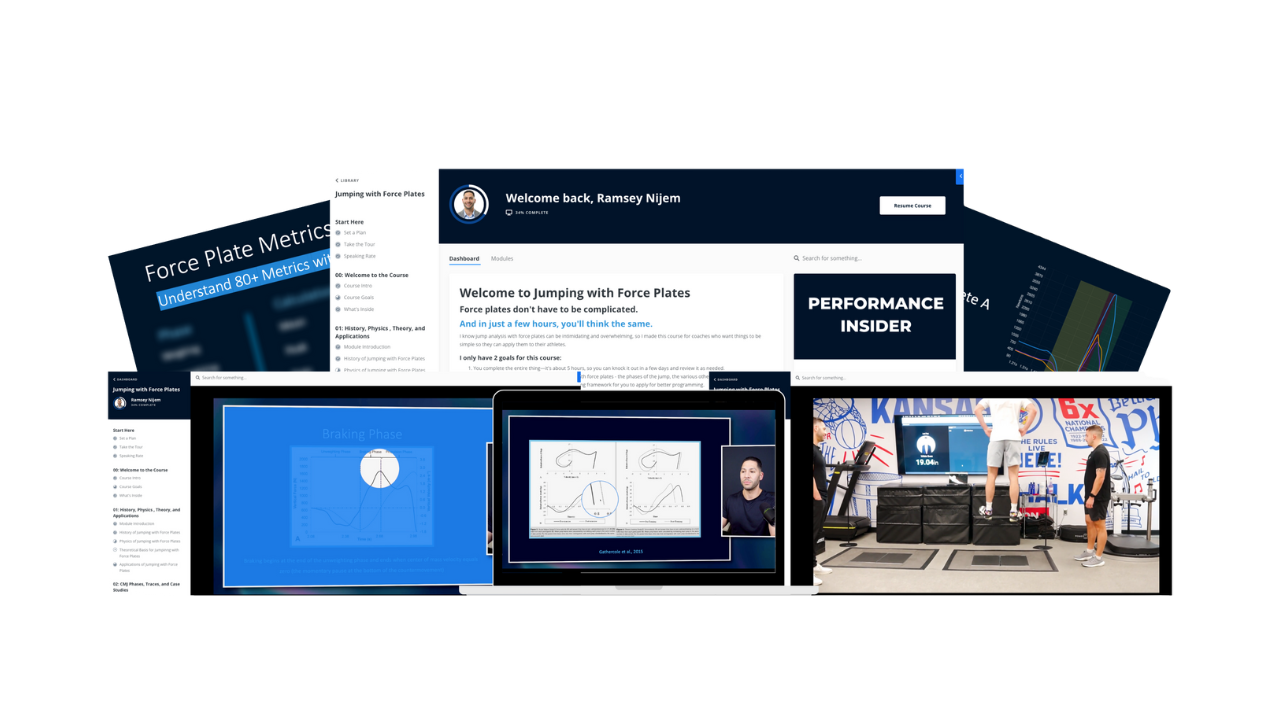Basketball is dominated by acceleration and deceleration.
Players may hit ~15 high-intensity accelerations and ~40 high-intensity decelerations per game.
This study compared the effects of two training programs on lab and court accel-decel ability (ADA) in college basketball players.
Does adding plyometrics to strength work lead to better braking in the lab and more effective stops on live, basketball-specific actions?

What Did the Researchers Do?
Training Program
- Researchers randomized 11 men and 13 women from NAIA college basketball teams to strength and plyometrics (SP) or strength (S) training.
- Both groups lifted similar primary strength exercises (RIR-based loading).
- SP replaced accessory work with structured plyometrics (pogos, loaded trap-bar jumps, hops/hurdles), emphasizing fast SSC.
- Training was done 2x per week for 6 weeks.
Lab Tests
- CMJ on dual force plates + 3D motion capture
- 7-m sprint and ADA (accelerate 7 m, then max decel) with timing gates + kinematic tracking.
On-Court Drills
- Closeout (passive & live) ⮕ defender sprints from under basket to ball at the top, then brakes into stance.
- Drive & Score (passive & live) ⮕ ball-handler attacks from 15 m vs passive or live defender.
- A 20-Hz local positioning system (LPS) (KINEXON) was utilized to collect positional data.
Key Variables
- CMJ ⮕ CMJ braking kinetics (relative braking force, braking RFD), concentric kinetics, jump height
- ADA approach velocity/momentum, average deceleration, horizontal braking impulse; on-court max/avg decel, max velocity.

What were the results?
CMJ
- Time effects for braking and concentric kinetics
- Only SP exceeded MDC and had CIs not crossing zero for braking force and braking RFD (i.e., true eccentric-phase wins without jump-height change).

Accel-Decel Ability
- Time effects for sprint time, approach velocity, and momentum.
- Importantly, group×time for average deceleration and horizontal braking impulse favored SP (improved at post; S did not).

On-Court
- Closeout (live): Time effect for max decel; only SP’s delta exceeded MDC and CI didn’t cross zero.
- Drive & Score (live): Time effects for max decel and average decel; SP showed robust gains (delta > MDC, CI > 0).

Transfer/regressions:
- CMJ jump height predicted changes in closeout max velocity (passive & live; adj R² 0.53 and 0.29).
- ADA metrics (avg decel; peak velocity) predicted changes in decel/velocity on-court.
- Being in the strength-only group predicted lower max decel in Drive & Score (live).
What Does This Mean?
- Plyos + strength improved eccentric/braking qualities in CMJ and translated to better on-court deceleration in live, sport-specific actions.
- Decel capacity gains (ADA avg decel improved) showed ecological transfer to on-court braking in contested drills.
- Short sprints/closeouts may track with CMJ height/velocity capacity, reinforcing CMJ as a practical proxy for explosiveness that influences court speed.
The Simplest and Fastest Way to Learn Jump Analysis with Force Plates
Limitations
- Short intervention (6 weeks) likely underestimates potential jump-height/velocity changes.
- Small, convenience sample of NAIA teams
Coach’s Takeaway
- Blend strength + plyos in pre-season (2×/wk x 6 wks) to target braking ⮕ expect improvements in CMJ braking kinetics, ADA decel, and live on-court decel.
- Track CMJ height + ADA avg decel ⮕ these training KPIs were linked to on-court changes
- Segment & monitor with these simple tactical drills ⮕ closeout live; drive-and-score live were sensitive to change here.
I hope this helps,
Ramsey
Reference:
Rauch J, Leidersdorf E, Reeves T, Wadhi T, Storey L, Taylor D, Elliott M, De Souza EO, Tricoli V, Lamas L. (2025). From lab to court: Evaluating the transfer of improvements in laboratory assessments to on-court performance in collegiate basketball players. International Journal of Sports Science & Coaching.





